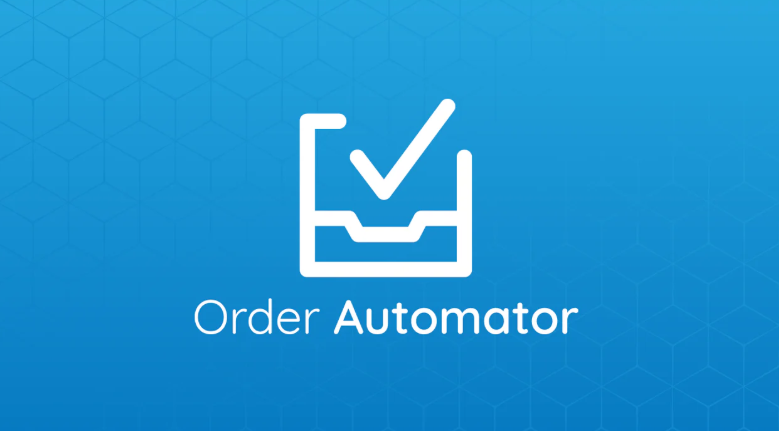If you've ever felt the frustration of managing multiple online accounts, whether…
How to Migrate from Magento 1 to Magento 2 in 9 Easy Steps

9.
How to Migrate from Magento 1 to Magento 2 in 9 Easy Steps
How do you migrate Magento 1 to Magento 2? Since the release of Magento 2 in 2015, there has been much ruckus concerning Magento migration from 1 to 2.
Whereas some Magento 1 online merchants upgraded to Magento 2 almost asap, many opted otherwise.
Instead of voluntarily switching to Magento 2, they’ve maintained the Magento 1 online store for nearly five years.
Why? You’d ask.
Table of Contents
Why Migrate Magento 1 To Magento 2
Here are several possible reasons a digital store owner would hesitate to migrate from Magento 1 to Magento 2. First, it’s a tricky process.
Setting up and customizing a completely functional Magento 1 online store is already tricky enough. So, why would a thriving store contemplate undergoing another potentially cumbersome process?
Then there is the question of cost. Granted, both Magento 1 and Magento 2 are free online platforms. But the fact is that a typical Magento 1-to-2 upgrade would set your business back a couple of bucks.
Both directly and in the form of incurred business losses that arise from service outages during the upgrade from Magento 1 to Magento 2.
The genuine hurdle, however, has been that many entrepreneurs argue Magento 1 and 2 are substantially different versions of the same thing.
Henceforth, they’ve held that a swop of Magento 1-to-2 is akin to shifting an adjacent seat in a cinema theater, just a physical change lacking a substantial difference in the whole experience.
Also read Shopify vs Square: Definitive Ecommerce Platform Comparison.
Fair enough. Though the argument has repeatedly been proven flawed, it has undoubtedly worked in Magento1’s favor for over half a decade now.
But not anymore, because Magento 1 is finally biting the dust. Whether you like it or not, your back is up against the wall; you must move your store.
And that forms the basis of this ultimate Magento 1 to Magento 2 migration guide.
Herein, we’ll feature the three primary migration options and the essential benefits of upgrading from Magento 1 to Magento 2.
Above all, it elaborates on how to conveniently switch between Magento 1 & Magento 2 using the Cart2Cart auto-migrating tool.
But before I tell you about the issue of Magento 1 biting the dust (retiring), let’s look into it. What is it all about?
June 2020 Spells Doom For Magento 1
Magento 1 has had a good run for ten-plus years. But as the saying goes, all that goes up must come down.
Magento 1’s end first appeared in 2015 after the same company’s Magento 2 online platform was released.
That move set the ball rolling. It soon became apparent that it was no longer a question of if and when Magento 1’s final nail was in the coffin.
And it didn’t last. Towards the end of 2015, the company finally dropped the bombshell. The big reveal read: from 1 June 2020, Magento will officially cease supporting Magento 1.
Yap, you read that right, Magento 1 has a lifeline of a few weeks before the curtains finally come down for it. And it’s not like Magento 1 gets wiped off the face of the earth, no, don’t get twisted. Instead, Magento will put a stop to its maintenance.
This means that you will no longer receive additional extensions, fixes, modules, or security patches from the company.
In other words, Magento 1 will be nearly obsolete. With nil security updates, the digital platform is left vulnerable and exposed to various cyber-attacks. It compares to a mineral-endowed country with no defense army.
And since D-day is fast approaching, holding onto Magento 1 isn’t tenable anymore. Whether you like it or not, you must migrate. That’s your option.
However, how and where you migrate will depend on your preferences and business needs. Speaking of which, you have two possible routes to salvage your eCommerce store before the hammer falls.
The first option involves moving your online store entirely from the Magento ecosystem—yes, that means you avoid even Magento 2 and its original editions.
This route has led to quite a few brands moving their stores to third-party online platforms such as BigCommerce, Shopify, WooCommerce, Prestashop, etc. Each platform has its fair share of downsides and benefits over Magento.
Okay, I suggest you try any of these platforms. In that case, I think you’d like to check the Magento to WooCommerce Migration guide or the recent relevant insights with detailed tutorials contained in the Magento to Shopify Migration article.
Both posts elaborate on transferring all of your store data from Magento automatically and without downtime.
But this approach doesn’t suit everyone. Some businesses’ needs can only be addressed by Magento. We’re talking here about digital sites that prioritize code-based capabilities, powerful store management tools, complete platform control, SEO-friendly URLs, and more.
If you fall into this category, consider looking into the second alternative route. It involves moving all of your store data and elements from Magento 1 to Magento 2, which you can consider an upgrade.
Besides Magento 1’s June 2020 doomsday, what do you stand to gain from switching from Magento 1 to Magento 2? Are there tangible reasons?
Why Upgrade Magento 1 to Magento 2?
We’ve said it enough times already: Magento 1 is tremendous. It shares many aspects with Magento 2.
But don’t convolute it—the two aren’t the same. Though built on the same basis, Magento 1 and Magento 2 differ distinctly, with the latter proving vastly superior to the former in many ways.
More particularly, Magento 2 offers:
A friendly Admin
Admittedly, even with a grasp of the workings of Magento 1’s tools, its interface can be confusing. Configuring its devices and customizing your website requires a lot of technical skills.
Besides, its interface isn’t the most elegant or prettiest.
Now, contrast that with the new admin panel on the latest edition of Magento 2. Magento fashioned out its second-generation interface, giving the likes of Shopify (less technical) a run for their money.
Whereas it retains the original customization privileges, the panel lends even non-technical users a seamless and responsive experience.
It’s much nattier, has logical functions, and has a more forthright navigation framework.
Flexibility & Performance
Magento 2 transcends appearance to offer better scalability and performance capacity.
All your digital store’s web pages are bound to load faster and perform better than on Magento 1.
How! You wonder.
Magento 2 leverages a range of complementary tools and technologies to enhance web performance.
For example, the Magento 2 HTTP accelerator and the complementary Varnish Cache boost your site’s caching process.
In the event of a spike in traffic, Magento 2 is capable of better resource handling and scaling than Magento 1.
Improved Security
While the ultimate blow to Magento 1’s security slate came in June 2020, this isn’t the first time the platform has lost out to Magento 2’s superior security elements.
Magento32 has consistently prioritized data security and continues to offer more tools and features to prevent system infiltration, recover from data loss, and mitigate potential cyber-attacks.
As regards curbing the system’s password security, Magento2 utilizes what’s known as SHA-255 hashing algorithms.
And should you emphasize that the complementary 2-factor authentication extension is valid?
Further, Magento 2 provides an exceptional Admin account URL, thus making it more difficult for malicious bots and potential attackers to guess your main login area’s address correctly.
Moreover, Magento 2 mitigates all the weaknesses that arise from system development, owing to an optimal development ecosystem that leverages tools like Magento DevBox Beta.
By making the development process fast and easy, all these complementary resources work to minimize the weaknesses.
Smooth And Continuous Checkout System
Through a smooth and seamless checkout system, Magento 2 helps you sell faster. The platform, for instance, saves your shoppers the trouble of always filling out the registration forms during checkout. Instead,
Mgaento2 treats web visitors as guests, allowing them to navigate the checkout process without interruptions.
Another bonus of using Magento 2’s checkout tools is the expanded flexibility. The platform offers a much broader range of integration for third-party apps, enabling you to set more payment options on the checkout page.
While at it, it’s possible to develop your custom payment modules swiftly. You’ll need to integrate Magento 2 into any merchant checkout solution, and hey, presto!
Now, with all these benefits alongside Magento 2’s superior customer experience traits, such as increased performance, we’re looking at an online platform capable of boosting your overall conversion and corresponding cart abandonment rates.
Ways To Switch Magento 1 to Magento 2
As regards the migration process, you might mistakenly think Magento provides a simple app that enables the one-click migration of Magento 1 and Magento 2.
Unfortunately, that’s not the case. With Magento, you don’t find any specialized tools or one-click tools from third-party sources.
After scouring far and wide, we have yet to find a solution that can transfer all data between the two platforms with one click.
That ought not to dampen your spirit, as there are many alternative tools you’d ride on without technical know-how.
Consider the three primary routes to upgrade Magento 1 to Magento 2 to unravel this option.
Manual Upgrade: Magento 1 to Magento 2
It’s the conventional method of importing data between the two website platforms. It’s primarily a technical process of carefully transferring data from the source platform and eventually pasting it into the target platform.
But don’t get it twisted. It’s easier said than done. Manually upgrading from Magento 1 to Magento 2 entails lots of coding and sophisticated web development tweaks.
To proceed with this option, you must possess technical programming skills, but that’s not all. You must also have in-depth knowledge of each platform’s core structure and source code.
This is the caveat: because the manual upgrade is highly intricate, there is a high probability of committing catastrophic errors.
So, you’ve got to tread carefully and not compromise your digital store.
Importing store data could take days if you factor in the extra hours needed to countercheck your work and rectify any errors and omissions.
Assisted Upgrade: Magento 1 to Magento 2
This is the most expensive of the three Magento 1 to Magento 2 upgrade options, with a solid backing reason.
The thing with assisted online store migration is that it involves hiring professionals to carry out the work on your behalf.
And yes, most of the time, professionals use the conventional manual method.
They usually spend lots of time importing data between the source and target platforms while coding and reprogramming accordingly.
Consider it an option for shop owners who prefer manual upgrades but lack the required skills.
The biggest hurdle, however, is hiring experts, which can be pretty expensive. Additionally, you risk committing potentially detrimental errors during data transfer.
Automated Upgrade: Magento 1 to Magento 2
This automated option is a personal favorite to some users owing to its many benefits.
Instead of manually transferring data, you can automatically move Magento 1 to Magento 2 using specialized migration tools.
It handles most of the work on your behalf, curtailing human input and enhancing accuracy.
Automation is the closest you get to a one-click migration tool. An app like Cart2Cart requires only a few simple non-technical tweaks, which should take just a few minutes before the system proceeds with your Magento upgrade from version 1 to version 2.
If you leverage the Cart2Cart extension in Magento 1 to Magento 2 data migration, the cost gets significantly lower than hiring a professional web development agency. Furthermore, it takes a shorter time to migrate an entire digital store from Magento 1 to Magento 2/
Therefore, all things considered, automated migration is the best method for joining Magento2 successfully before the slated June 2020. Having explored a broader range of tools, we’d recommend Cart2Cart ahead of the rest.
Why, you’d wonder!
Why Use Cart2Cart Data Migration Extension?: Magento1 to Magento2
Cart2Cart is one tool that is not just limited to handling Magento migrations.
It’s a globally renowned solution that continues to automate movement across a wide range of shopping cart platforms.
More specifically, it simplifies the online migration process by reducing manual configuration and enabling shop owners without technical skills to import all their store entities.
Cart2Cart offers an intuitive migration wizard that guides you throughout the process.
With that out of the way, Cart2Cart primarily supports Magento upgrade via a specialized Magento 1 to Magento 2 migration extension, which you’ll find on the Magento Extension Marketplace.
Acquiring and installing the tool onto your Magento online platform will cost you nothing. And that’s not all; additionally, you can create and customize your migration option free of charge.
It doesn’t stop there; the Cart2Cart data migration extension for Magento 1 to Magento 2 executes a demo import of your data between the two platforms.
It proceeds to move some of your store entities from the source platform to the subsequent target platform to demonstrate its data-importing prowess before the actual complete migration.
Then, upon payment for the service, you begin the complete migration. Cart2Cart will swiftly take action. The subsequent data transfer process should only take a few hours, during which your digital store remains online with no service interruptions.
Yes, that’s right. In short, Cart2Cart lets you migrate from Magento 1 to Magento 2 without downtime. You can continue processing transactions while your store data is copied and imported in the background.
The bottom line is that it should be possible to import all the crucial digital site entities, including all the complementary stores, CMS pages, coupons, reviews, orders, manufacturers, customers, products, categories, etc.
All the critical stuff gets mirrored from the source Magento 1 store to the target Magento 2 store.
Let’s now catch up on how to upgrade from Magento 1 to Magento 2.
How To Conduct Magento Upgrade: Magento 1 to Magento 2
Step #1: Employ Default Magento2 Online Platform
First up, the default Magento 2 digital platform is rolling out on a well-suited web host.
You should look at the Ultimate Magento hosting guide for tips on making it compatible with your Magento 2 eCommerce store.
Once you’ve bought a suiting hosting perk, you can set up a primary Magento 2 shop.
It should be straightforward, given that most top Magento hosts offer a one-click installer.
When creating a site, you want to limit your customizations as much as possible. The Cart2Cart Magento 1 to Magento 2 data migration extension works perfectly with the Magento template without any additional features.
Otherwise, modifying your store beyond this point will be futile since the target store will eventually reflect the source store’s attributes after an upgrade.
Besides, any extra customizations introduced could trigger errors and modify the target store’s intended look.
Step #2: Installing Cart2Cart Data Migration Extension
There is one exception to the modification rule. Yes, you read that right. You can add Cart2Cart Magento 1 to your site’s Magento 2 data migration extension.
The Cart2Cart data migration extension should be installed directly onto the Magento 2 target platform. Again, I can’t say that loud enough. Go to the Magneto marketplace and search for Cart2Cart M2.
Once you’ve installed it free of charge, you can launch it whenever you’re ready and proceed to migrate immediately.
Step #3: Creating Cart2Cart Account
To start the upgrade process, you must register an account with Cart2Cart via its leading site or an extension.
Regardless of your choice, you’ll find a couple of registration alternatives. You can sign up by submitting your details conventionally or logging in with Google or Facebook credentials.
Step #4: Enter Magento 1 Source Cart Details To Establish Its Connection Bridge
When you access your account and launch Cart2Cart’s Magento upgrade wizard, it shows a source and target cart setup window. In this window, you’ll fill in each store’s details and configure its respective connection bridges.
The source cart section comes first. You can indicate your source details by selecting “Magento” as a source cart and keying in your source store’s URL in the following field.
After that, you should establish a connection bridge on your source cart, which will eventually be the primary link for importing data between the two platforms.
Scroll past the Source Store URL field and hit the “Download Bridge” button to set it up. It should send a bridge to your local storage as a .zip file.
Unzip it and directly paste its content into your Magneto1 store’s root folder using an FTP client.
There you go. You’ve got a connection bridge on your source cart. To test it, hit the “Check Connection” button.
Step #5: Enter Magento2 Target Cart Details and Set Up Its Connection Bridge
After entering your Magento 1 source cart details and establishing the connection bridge, Cart2Cart prompts you to set up the Magento 2 target store.
So, head to the Target Cart Setup area, select Magento from the list of options, and then enter your Magento 2 site’s URL in the Target Store field.
Upon completion, you can download the target cart’s connection bridge file, unzip its contents onto your local storage, and then, using the FTP panel, paste everything to the root folder of your Magento 2 store.
At this juncture, you can confirm the cart’s connection validity by merely clicking on the Checking Connection button.
Step #6: Select The Store Entities You’d Like To Migrate
With the source and target carts’ connection set, the next step involves defining specific attributes you intend to import from Magento 1 to Magento 2.
Thankfully, Cart2Cart simplifies the process by displaying a checkbox following each entity. It should be possible to move stuff like:
- CMS Pages: Created dates, titles, descriptions, meta keywords, URLs, content headings, meta descriptions, and statuses.
- Reviews: Created dates, summary, description, user name, rate, title, type, and status.
- Coupons: Coupon date, code, description, name, customer groups, uses per coupon, discount amount, type of discount, use per customer, and status.
- Shipping: Shipping address (company, address1, address2, country, fax, telephone, state, zip code, city, and transaction)
- Orders: Product price, quantity, subtotal price, and discount price, product orders (name, SKU, option), order date, order ID, order status, order comments, total cost, tax price, shipment, credit memo, invoice, customer name, email, billing address (company, address1, address2, country, state, city, zip code, telephone, fax)
- Customers: Customer ID, first- last name, email, shipping address (company, address1, address2, country, state, city, zip code, telephone, fax), billing address (company, address1, address2, country, state, city, zip code, telephone, fax), created date, date of birth, customer group, newsletter, password, and gender.
- Taxes: Tax rules (tax class, tax rates), Tax class (name), tax rates (country, state, percent).
- Manufacturers: Name and image.
- Product categories: Meta title, meta keyword, meta description, name, thumbnail image, and image
- Products: Stock availability, quantity, manage stock, base image, additional image, thumbnail image, variants (SKU, weight, volume, images, attributes, price, price specials from date, group price, tier price, MSRP) downloadable products (price, files, max downloads), attributes (name, values), grouped products (associated products), bundle products, custom option (drop-down, multiple select, text area, text field, checkbox, radio button, file, date and time), related products, cross-sells, up-sells, product tags, weight, meta title, meta keyword, price, meta description, special price, particular price from-to date, group price, tier price, MSRP, product name, SKU, full specification, short description, tax class, status, manufacturer, country of manufacturer, and sorted in categories.
Okay, you can opt to import all of them by checking the Select All checkbox. Otherwise, you could select the specific entities you intend to move and leave the rest of the checkboxes blank.
Step #7: Customize Your Data Migration
Cart2Cart is a flexible tool that lets you dynamically customize the data migration process to the last detail. These settings are found in the Additional Options section, which typically includes the entity selection.
Now, to modify your Magento migration from 1 to 2, select your preferences from the list of options.
For example, you can opt to have the system move invoices, shipments, and credit memos to your Magento 2 store. You might also transfer images from the product, blog post, and category descriptions.
Moreover, Cart2Cart allows you to preserve your customer IDs on the Target store, importing product SEO URLs and types.
Transferring customers’ passwords, setting up product variants based on combination options, maintaining original order IDs on the target, creating 301 redirects on your target store after migration, skipping the migration of product thumbnail images, and clearing your current data on your target store before the data migration process.
Not bad at all!
But here is the kicker: While some of the options are free, the majority cost extra. Retaining your original customer IDs on your new Magento 2, for instance, will cost an additional $49.
Then, transferring your categories and product SEO URLs will cost you an extra $59.
And so, if you’re on a budget, you sure want to prioritize the essential stuff.
Step #8: Perform a Free Demo Migration
The demo may be an unnecessary step, especially since Cart2Cart has already proven itself through positive reviews and continues to draw from past users.
Understandably, many folks share the same pervasive sentiment: you don’t want to skip the free demo migration. It offers much-needed insights into the workings of your target store that might turn out.
From the demo target store, you get a sense of how different entities have been mapped, background functionalities, and the front-end interface, including some of the stuff you might need to configure after migration.
The data import process here should last around 30 minutes. However, Cart3Cart will only transfer a few of your selected entities.
Step #9: Begin The Full Magento 1-to-2 Migration
If your simulated migration (demo) went well, you can proceed with the entire upgrade process.
It’s important to note that Cart2Cart bills you for everything before proceeding with the complete migration. You’ll need to pay for the data transfer alongside an additional migration option.
In case you’re wondering, Cart2Cart offers affordable migration pricing rates, which are calculated based on the number of entities you intend to move.
Meanwhile, run your numbers through the Cart2Cart estimator tool to assess what you’d wind up paying.
Back to the migration process: As soon as you settle the bill, you should be able to proceed with the full migration.
Cart2Cart simultaneously conducts the whole process in the background while retaining your source Magento 1 store intact.
Therefore, you can rest assured you won’t experience downtime.
However, if a problem arises unexpectedly, it’s lucky for you that the Cart2Cart tech support team works 24/7. Just get in touch.
If everything proceeds smoothly, Cart2Cart will need minimal, if any, input for the next few hours. All data is imported from Magento 1 and successively mapped onto Magento 2.
In the meantime, you can monitor the progress from your Cart2Cart account. Alternatively, close the window and wait for updates as you handle your business on the source store.
Whatever you opt for, ultimately, Cart2Cart will email you an alert when you complete the Magento migration from version 1 to version 2.
Over to You
That should be it as regards switching Magento 1 to Magento 2.
You want to countercheck and review everything on your Magento 2 target store, from layout, functionalities, and attributes to the nitty-gritty. As a final measure of confirmation, you can also conduct a few shopping and transaction tests.
Now, if everything clicks, treat yourself to a bottle of champagne and raise a toast to your new feat. You’ve just dodged Magento1’s doomsday challenges and lurched on Magento2’s trend—bravo!
Start Shopify For Only

Try Shopify free for 3 days, no credit card is required. By entering your email, you agree to receive marketing emails from Shopify.




Comments (0)